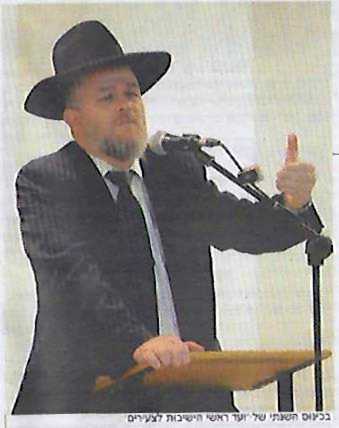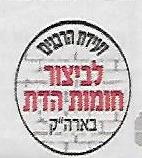Rav Braverman

It took us all some time to know, understand and internalize that the world has changed. In the past two decades, the materialistic arena is located in online technology. The gigantic and multifaceted world is prone to suck in the spectator inside in seconds - to a sordid money-oriented, pleasure seeking flood. Any attempt to erase such scenes from one's mind is complicated and extremely difficult.
In order to help comprehend this, we suggest studying the history of smoking. The young folk of this generation will find it difficult to believe that a mere twenty-five years ago, people smoked freely in yeshiva and beis medrash halls! In my youth, a maggid shiur in my yeshiva ketana used to smoke throughout the entire shiur. In the yeshiva gedola, there were sedorim where the beis medrash was filled with smoke. There were ashtrays all over, in every store and office.
But since then there has been a revolution. Laws have changed to make it much more difficult for the smoker. Massive publicity campaigns detailed the dangers of active and passive smoking. Research and publications showed the higher death rates among smokers.
Gradually, the laws made smoking more and more restricted. At first it was banned in halls and public offices. Then it was banned in more and more places. The insurance companies asked customers about their smoking habits and charged more to smokers.
In the end, the long struggle was successful, especially in preventing new people from taking up the habit and encouraging those who were not severely addicted to stop. The main achievement was making access more difficult.
Why did this work?
Because the smoker began to think: Just for a cigarette I have to get up and walk outside to find a place to smoke. Is it worth it to have to stand in the heat or the cold just to smoke?
As it becomes harder and harder, the number of smokers becomes smaller and smaller.
The opposite has happened with the advance of communications technology. Once, when the yetzer hora wanted to tempt someone to try out unfamiliar experiences and to taste, cholila, the taste of sin, a person had to leave his familiar surroundings, to travel, to hide, maybe to change his appearance, to look right and left and over his shoulder (without looking upward to his Father in Heaven...). This effort weighed on the potential sinner. The walls of the beis medrash and the bounds of the Jewish home were a natural barrier to falling to the temptations of sin. A person was often forced to choose either or: to leave entirely to the world of sin or to stay in familiar and comfortable surroundings. A person could not easily do both at once.
However now, unfortunately, sophisticated technology has managed to insinuate itself into the very walls of the beis medrash. The phones have become devilishly small and unobtrusive. A small card can contain the horrors of the world, Rachmono litzlan. The open cell phones get cheaper and cheaper and can be bought for small change. Their owners are exposed and in a moment of weakness they can fall to the depths — even within the beis medrash or the Jewish home! They can reach the deepest levels of hell.
To our great dismay, the phenomenon of trying to have it all is not uncommon. We must understand and internalize the challenge that we face from the accessibility that modern technology brings. Sin is frighteningly close, and we must devise tactics to deal with this situation and the challenge of accessibility.
To deal with this challenge we must act on two fronts: 1] Awareness, and 2] Positive alternatives.
Besiyata deShmaya today there is great awareness of the issues. We must talk incessantly about the need to stay away from evil, and to stress the danger from even a momentary glance at the evils that modern technology has brought so close. We must talk about this until it penetrates to our very bone marrow.
 Rabbinical Committee to Fortify the Walls of Torah
Rabbinical Committee to Fortify the Walls of Torah
But there are pleasures that can function as an alternative to the transitory material pleasures. We are talking about human warmth. When a parent and an educator heap compliments and encouragement on our youth, smiles and embraces, interest and concern, value and admiration, they have the potential to give our youth the desire to fight and the ability to overcome.
Modern communication technology create coldness and apathy. If they are countered with furnaces of human warmth, that work constantly, without interruption, then they have the power to melt the icebergs and turn them into pure and holy water.
As parents and educators we must not give up. We must remember that these challenges must be able to be met by a generation that can overcome them, for if not the Creator would not have allowed them. The choice is between the momentary pleasure and the eternal good.
Dovid Hamelech taught us that the secret of Yahadus includes the good and the pleasant. The parent and the educator must show this to the child and make it concrete and actual.




